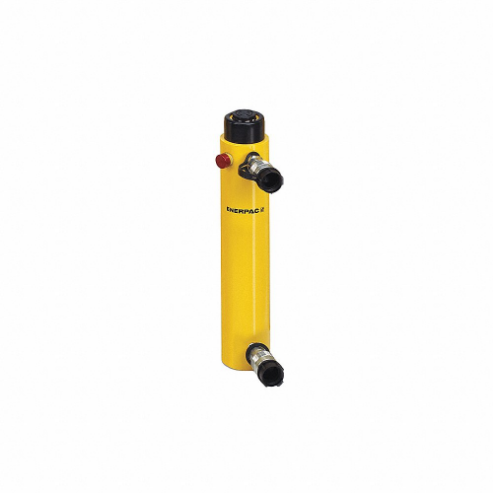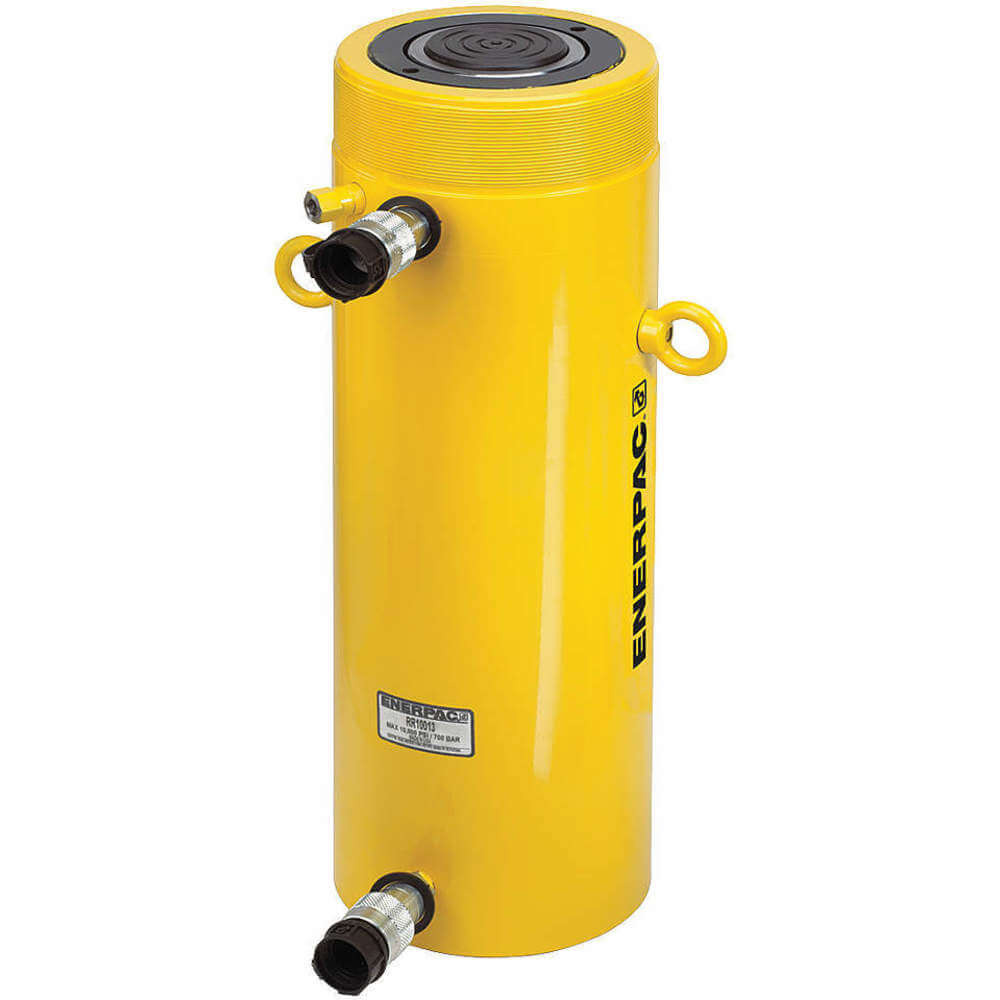Enerpac RR1010 double acting hydraulic cylinder is designed for unidirectional lifting and providing support during heavy-duty operations. It is commonly used in conjunction with hydraulic pumps to effortlessly handle tasks involving the lifting and positioning of heavy objects and machinery.
Working Mechanism:
- A hydraulic jack generates pressure by transferring oil through two cylinders.
- During the retraction of the pump plunger, the suction valve opens, enabling oil to enter the pump chamber.
- As the plunger is depressed, oil flows through an external discharge valve, filling the cylinder chamber.
Features:
- Enerpac RR1010 double acting hydraulic cylinder features steel construction with baked enamel finish for structural rigidity and resisting corrosion on exposed surfaces.
- This Enerpac RR1010 hydraulic cylinder is equipped with a safety valve for preventing over-pressurisation.
- It includes a plunger wiper for pollution reduction and high-performance wear bands to provide increased resistance to bearing damage.
- This Enerpac RR1010 double-acting hydraulic cylinder is integrated with hardened saddles to protect the plunger during pressing & lifting.
- It has base mounting holes, as well as collar & plunger threads for easy unmounting and fixturing.
Compatible Accessories:
- Enerpac CATS12 Tilt Saddle: This saddle is specifically designed for use with the Enerpac RR1010 hydraulic cylinder, providing adjustable tilting capabilities for precise positioning and support in various lifting and pushing applications.
Frequently Asked Questions:
Q. What is the maximum operating pressure of an Enerpac RR1010 hydraulic cylinder?
A. 10000 psi.
Q. What are the differences between single-acting and double-acting hydraulic cylinders?
A. Single-acting hydraulic cylinder applies force through one side of the piston, extending under hydraulic pressure and retracting either by the load or an internal spring. In contrast, a double-acting hydraulic cylinder has two ports that enable the force to be applied in two directions, allowing both extension and retraction of the piston.
 Change Country
Change Country

